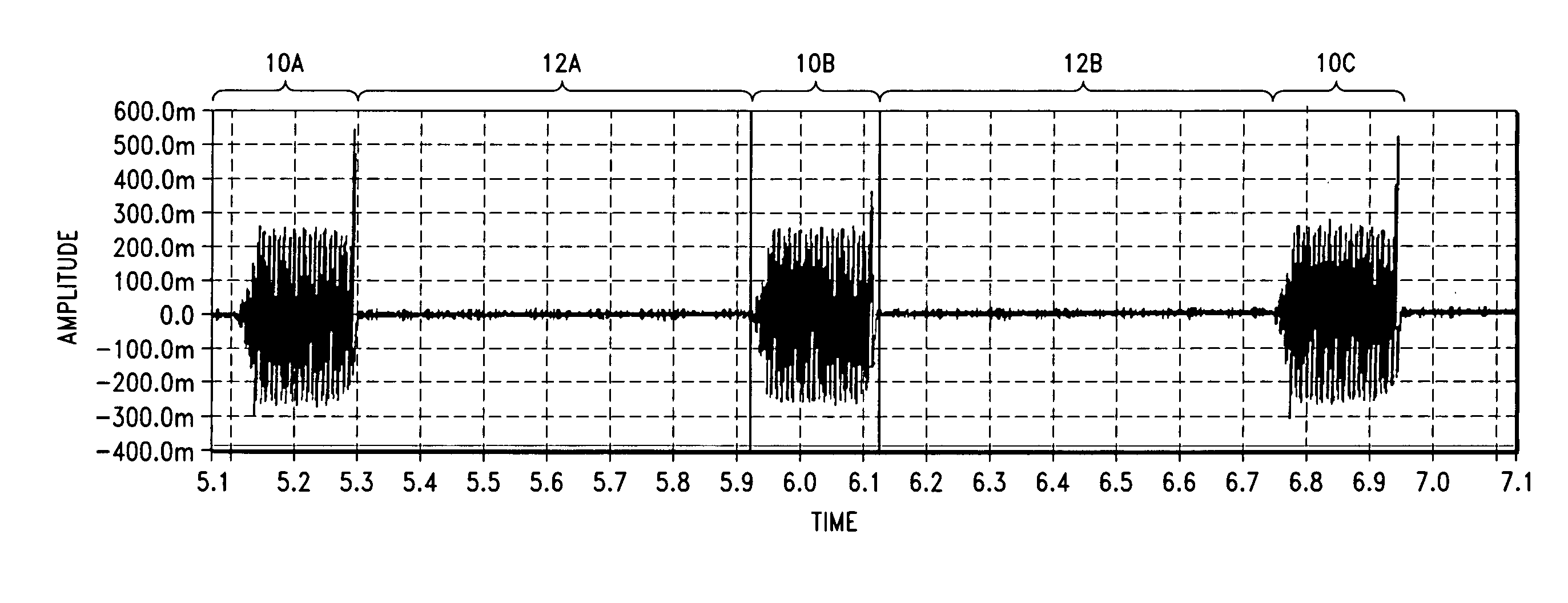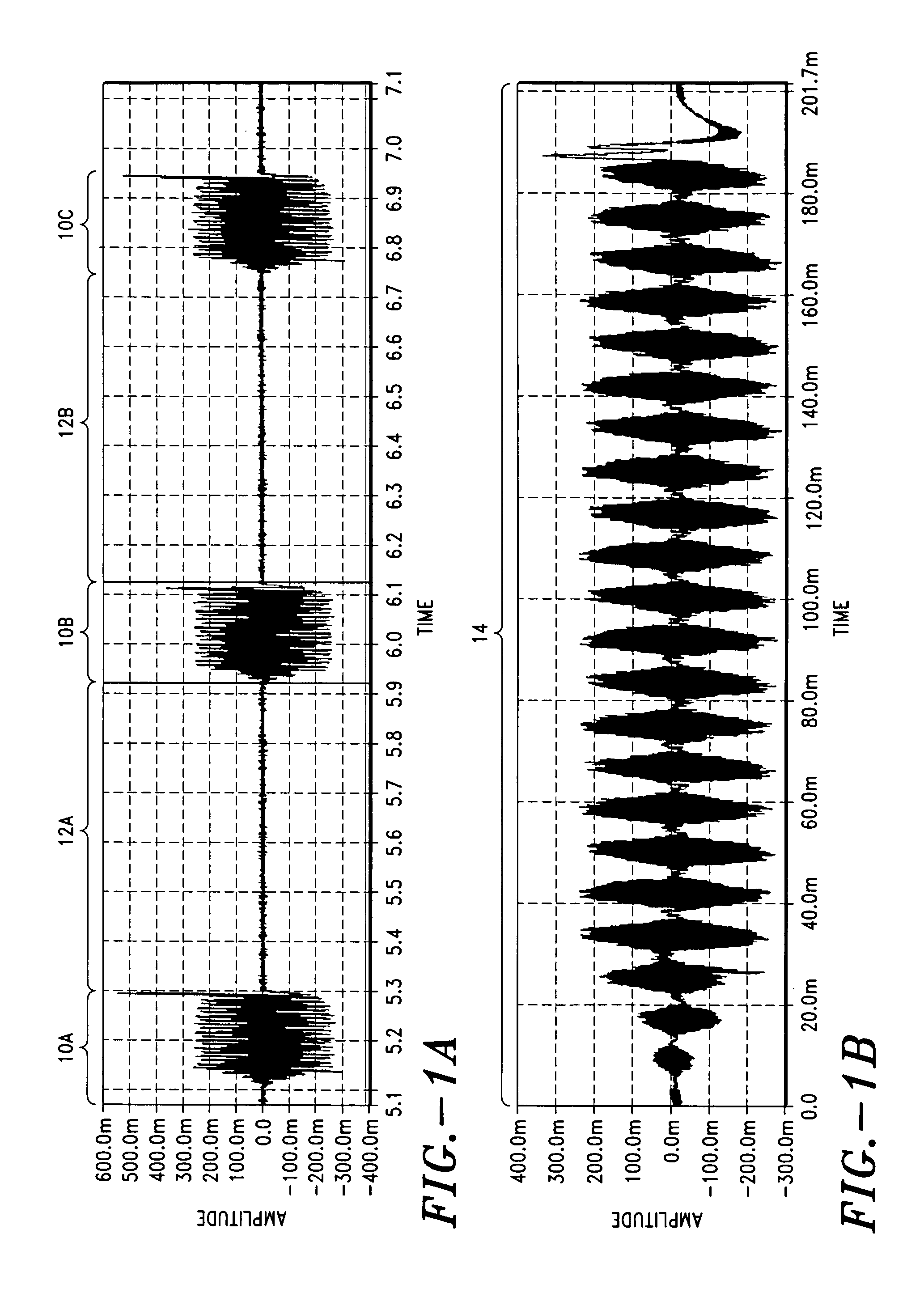Method and system to control respiration by means of simulated neuro-electrical coded signals
a neuro-electrical coded signal and respiratory system technology, applied in the field of medical methods and systems for monitoring and controlling respiration, can solve problems such as control signals generated and transmitted, potentially severe degrees of oxyhemoglobin desaturation, and harm to asthma patients
- Summary
- Abstract
- Description
- Claims
- Application Information
AI Technical Summary
Benefits of technology
Problems solved by technology
Method used
Image
Examples
example 1
[0143] Three swine were subjected to various frequency modulated, simulated neuro-electrical coded signals. Four signals having four different modulation periods were employed; 400 msec, 800 msec, 1.2 sec and 2.0 sec. The voltage levels for the each signal were as follows: ±200 mV, ±230 mV and ±250 mV. Each signal was modulated within a signal envelope substantially similar to the envelope shown in FIG. 8, at a frequency of approximately 500 Hz.
[0144] During the application of each signal, the following physiological parameters were monitored: tidal volume in, tidal volume out, oxygen saturation and CO2.
[0145] The results from one representative study are shown in Tables II-V, below.
[0146] It can be seen from Tables II-V that tidal volumes, oxygen saturation, and end-tidal CO2 levels vary, depending on the period of time of signal transmitted and the voltage at which the signal is transmitted. In this study, maximal tidal volume was achieved with a signal of 800 msec and a voltag...
PUM
 Login to View More
Login to View More Abstract
Description
Claims
Application Information
 Login to View More
Login to View More - R&D
- Intellectual Property
- Life Sciences
- Materials
- Tech Scout
- Unparalleled Data Quality
- Higher Quality Content
- 60% Fewer Hallucinations
Browse by: Latest US Patents, China's latest patents, Technical Efficacy Thesaurus, Application Domain, Technology Topic, Popular Technical Reports.
© 2025 PatSnap. All rights reserved.Legal|Privacy policy|Modern Slavery Act Transparency Statement|Sitemap|About US| Contact US: help@patsnap.com



